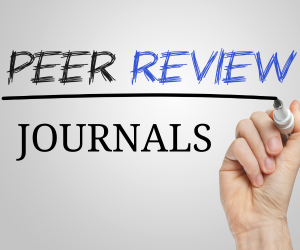Social Determinants And Health Inequities In Marginalized Communities: A Public Health Perspective
DOI:
https://doi.org/10.48047/x89m1770Keywords:
Health Disparities, Social Determinants, Marginalized Populations, Public Health Equity, Statistical AnalysisAbstract
Persistent health disparities among marginalized communities reflect deep-rooted structural and social inequalities. These inequities are closely tied to the social determinants of health conditions in which people live, work, and age yet the quantifiable impact of these determinants remains under examined across diverse populations. Addressing this gap is essential to inform equitable public health strategies. This study aims to investigate the relationship between key social determinants such as income, education, housing stability, and access to healthcare and health outcomes within marginalized communities. It seeks to statistically assess how these factors contribute to observed health inequities and identify which determinants exert the greatest influence. Using a cross-sectional, population-based quantitative design, the study draws from national health surveys and demographic databases. Multivariate regression analysis, logistic modeling, and stratified subgroup comparisons are employed to assess correlations between social variables and health indicators, including prevalence of chronic diseases, life expectancy, and access to preventive care. The analysis controls for confounding variables such as age, gender, and geography. Preliminary findings suggest that income inequality and limited educational attainment are the most significant predictors of poor health outcomes. Communities facing housing insecurity and reduced healthcare access exhibit markedly higher rates of preventable conditions. The results reveal statistically significant disparities (p < 0.01) in health metrics linked to compounded social disadvantages. The study underscores the critical influence of social determinants on health inequities in marginalized populations. By quantifying these effects, the research supports policy interventions aimed at structural reform, resource allocation, and targeted health programming. These findings reinforce the importance of integrating social equity into public health planning and evaluation frameworks.
Downloads
References
2. Artiga, S., & Hinton, E. (2018). Beyond health care: The role of social determinants in promoting health and health equity. Kaiser Family Foundation. https://www.kff.org/racial-equity-and-health-policy/issue-brief/beyond-health-care-the-role-of-social-determinants-in-promoting-health-and-health-equity/
3. Benfer, E. A., Vlahov, D., Long, M. Y., Walker-Wells, E., Pottenger, J. L., Gonsalves, G., & Keene, D. E. (2021). Eviction, health inequity, and the spread of COVID-19: Housing policy as a primary pandemic mitigation strategy. Journal of Urban Health, 98(1), 1–12. https://doi.org/10.1007/s11524-020-00502-1
4. Bowleg, L. (2012). The problem with the phrase women and minorities. American Journal of Public Health, 102(7), 1267–1273.
5. Braveman, P., Arkin, E., Orleans, T., Proctor, D., & Plough, A. (2022). What is health equity? Robert Wood Johnson Foundation.
6. Braveman, P., Arkin, E., Proctor, D., Kauh, T., & Holm, N. (2022). Systemic and structural racism: Definitions, examples, health damages, and approaches to dismantling. The Robert Wood Johnson Foundation. https://www.rwjf.org/en/library/research/2022/10/systemic-and-structural-racism-definitions-examples-health-damages-and-approaches-to-dismantling.html
7. Browning, C. J., Ory, M. G., Ahn, S. N., & Thomas, S. A. (2025). Addressing healthy ageing and social determinants of health. Frontiers in Public Health. https://www.frontiersin.org/journals/public-health/articles/10.3389/fpubh.2025.1657102
8. Crenshaw, K. (1989). Demarginalizing the intersection of race and sex. University of Chicago Legal Forum, 1989(1), 139–167.
9. Crenshaw, K. (1989). Demarginalizing the intersection of race and sex: A Black feminist critique of antidiscrimination doctrine, feminist theory and antiracist politics. University of Chicago Legal Forum, 1989(1), 139–167.
10. Desmond, M. (2016). Evicted: Poverty and profit in the American city. Crown Publishing.
11. Farmer, P., Nizeye, B., Stulac, S., & Keshavjee, S. (2006). Structural violence and clinical medicine. PLoS Medicine, 3(10), e449.
12. Galea, S., Ettman, C. K., & Vlahov, D. (2018). Urban health. Oxford University Press.
13. Gutiérrez, J. M. G., Reed, D. E., Macia, K. S., et al. (2025). Ethnoracial inequities in social stressors and alcohol use. Social Science & Medicine. https://www.sciencedirect.com/science/article/pii/S0277953625007002
14. Harris, K. M. (2025). Parental burden and psychiatric discharge outcomes. ProQuest. https://search.proquest.com/openview/714786c14aca072e20a519e2ff82d358
15. Kirkley, M. (2025). Intersectionality gaps in infant and maternal mortality. ProQuest. https://search.proquest.com/openview/cbd9c23ea0288803be1a8772342858bd
16. Krieger, N. (2020). Measures of racism, sexism, heterosexism, and gender binarism for health equity research: From structural injustice to embodied harm—an ecosocial analysis. Annual Review of Public Health, 41, 37–62. https://doi.org/10.1146/annurev-publhealth-040119-094017
17. Marmot, M., & Allen, J. (2020). COVID-19: Exposing and amplifying inequalities. Journal of Epidemiology and Community Health, 74(9), 681–682. https://doi.org/10.1136/jech-2020-214720
18. Solar, O., & Irwin, A. (2010). A conceptual framework for action on the social determinants of health. WHO. https://www.who.int/publications/i/item/9789241500852
19. Tai, D. B. G., Shah, A., Doubeni, C. A., Sia, I. G., & Wieland, M. L. (2021). The disproportionate impact of COVID-19 on racial and ethnic minorities in the United States. Clinical Infectious Diseases, 72(4), 703–706. https://doi.org/10.1093/cid/ciaa815
20. Williams, D. R., Lawrence, J. A., & Davis, B. A. (2019). Racism and health: Evidence and needed research. Annual Review of Public Health, 40, 105–125. https://doi.org/10.1146/annurev-publhealth-040218-043750
Downloads
Published
Issue
Section
License

This work is licensed under a Creative Commons Attribution 4.0 International License.
You are free to:
- Share — copy and redistribute the material in any medium or format for any purpose, even commercially.
- Adapt — remix, transform, and build upon the material for any purpose, even commercially.
- The licensor cannot revoke these freedoms as long as you follow the license terms.
Under the following terms:
- Attribution — You must give appropriate credit , provide a link to the license, and indicate if changes were made . You may do so in any reasonable manner, but not in any way that suggests the licensor endorses you or your use.
- No additional restrictions — You may not apply legal terms or technological measures that legally restrict others from doing anything the license permits.
Notices:
You do not have to comply with the license for elements of the material in the public domain or where your use is permitted by an applicable exception or limitation .
No warranties are given. The license may not give you all of the permissions necessary for your intended use. For example, other rights such as publicity, privacy, or moral rights may limit how you use the material.







